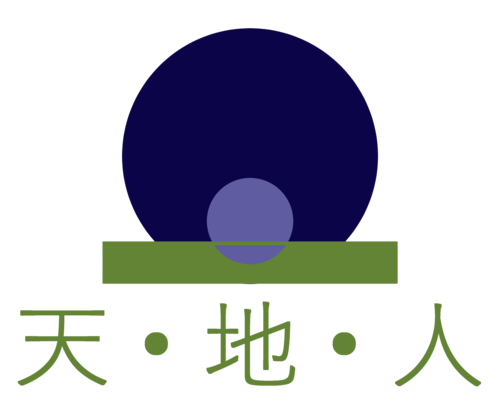Whats with the Logo? : Yin & Yang Theory
The Importance of Yin & Yang in Traditional Chinese Medicine
This 5,000 year old philosophy forms the basic principles of all Oriental medicine. The concept of Yin and Yang originated and evolved to describe how things function in relation to each other. Yin and Yang are terms or symbols that describe the process of change in the relative world and the rhythm of alternation between opposite tendencies (light to dark, summer to winter). They are antagonistic but at the same time complementary; they establish balance between individual things that are themselves incomplete without the other half. In the simplest explanation one cannot exist without the other.
It is important to know that the theory of Yin and Yang is found in the macrocosm (whole/universe) as well as the microcosm (part/human). What goes on outside of us is directly related to what goes on inside the body. While the seasons change from one to another our bodies need to adapt to the surrounding changes so that we can avoid imbalances that make way for disease. All phenomena can be analyzed in terms of yin and yang, which is just another way of saying that everything in this constantly changing world is relative.
Yin and yang mutually consume one another. They are in constant state of adjustment, if one is greater, the other will try to compensate and readjust. It is this predisposition for the body to adjust itself energetically that makes it possible to use food and herbs to restore balance.
Yin & Yang Theory in Food
Over the centuries, traditional Chinese medicine practitioners divided food into categories of yin and yang. This division was made according to the perceived effect each food had on the body. But because in nature yin and yang embody aspects of each other, plants and food have both yin and yang aspects. Herbs that have a spicy or sweet flavor and stimulate the metabolism generally have a warming or yang effect. Some examples are cayenne, cinnamon and ginger these are all considered warming thus classified as yang. On the contrary herbs with bitter, salty or sour flavors tend to have a cooling, eliminative and yin quality. Some examples are rehmannia, wood ear and lily bulb. It is important to remember that when I refer to these I am speaking in generality because nature represents a much more complex interaction of yin and yang qualities than I am explaining here.
Yin & Yang in the Body
“As within so without” is great quote that circumvents this entire theory. Your outside world is a direct reflection of your inside world. Just as you can find yin and yang qualities throughout nature you can find it within the body all the same. The body is a far more complex way of explaining the yin and yang theory. The chart below shows how yin and yang are represented in the body;
Exterior & Interior
The skin and the muscles act like the back to protect the more vulnerable inside from pathogens such as cold, wind, dis-ease. Therefore making the exterior as portrayed above yang and the interior yin.
Front & Back
In traditional Chinese medicine the front of the body is soft and vulnerable making it Yin while the back contains the spine that holds the ribs as a protector making it more Yang. The back also receives more of the suns energy making it more yang while the front faces the earth and is in shade making it yin.
Zang Fu Organs (Solid or Hollow)
Yin organs store Qi, blood, body fluids and essence. The organs are in constant activity or storing and producing these vital substances in the body. While Yang organs on the other hand are responsible for receiving and circulating, this includes digestion, transformation and excretion. Yang organs as shown in the chart below are the small and large intestine, the triple burner, the bladder and gallbladder while the Yin organs are the liver, heart, spleen, lungs and kidneys.
Qualities of Yin and Yang
In Michael Tierra’s The Way of Chinese Herbs this theory is broken down in a chart that shows how yin and yang functions, the seasons that best represent them, energy etc. View the chart below as a reference to better understand this concept.
Lily Choi Natural Healing Logo
The logo was created from my understanding of the Yin and Yang theory in my own perspective. I could have gone with the traditional Yin and Yang symbol but its been overused and I felt it did not show the relationship between the macrocosm and the microcosm as well as I would have liked thus the Lily Choi Natural Healing logo was born.
The logo has a small circle within a much bigger circle representing the idea that humans are just a small universe within a much bigger universe. These circles sit on top of a green rectangle that symbolizes the earth with a line going through the small circle which is where the yin and yang theory come in. The small purple circle is the human, since the human is active this makes it the yang while the earth is the yin. Just like in the original symbol the yin is within the yang and the yang is within the yin. This is shown in the logo where the green line or the yin is within the purple circle or the yang and vice versa. All together each part of the logo shows what the characters below the logo states, Universe (天), Earth (地) and Human (人).


